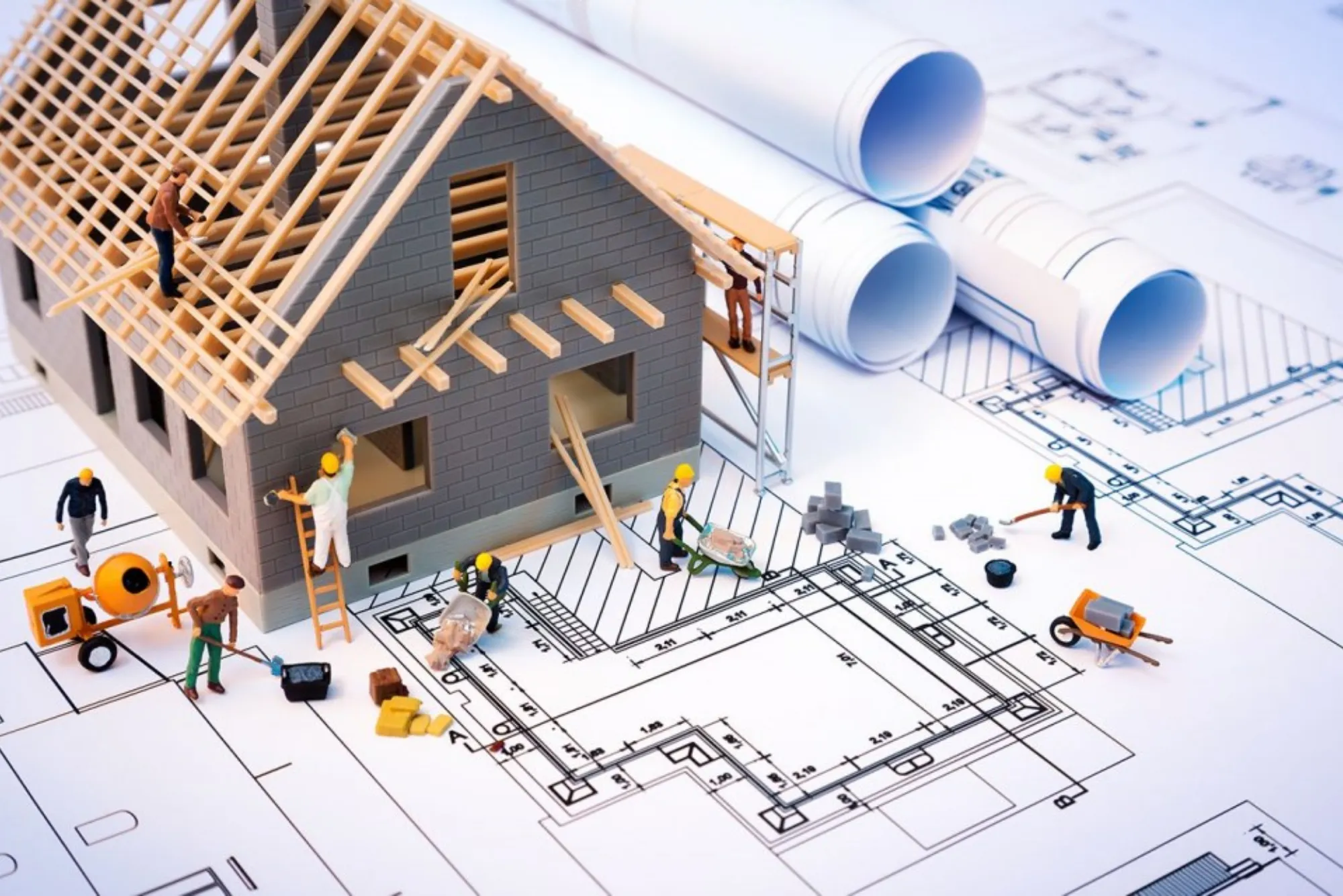Constructing a house is an exciting journey, but it requires careful planning and budgeting. A crucial part of this process is obtaining a detailed construction estimate. This guide will walk you through the steps to get an accurate estimate, ensuring your project stays on track and within budget.
Understanding Construction Estimates
Before diving into the process, it’s essential to understand what a construction estimate is. A construction estimate provides a detailed breakdown of all costs associated with building your house. This includes materials, labor, permits, and other expenses. An accurate estimate helps you avoid unexpected costs and financial setbacks.
Quantity Surveying
Quantity surveying is a critical aspect of preparing a construction estimate. A quantity surveyor (QS) plays a vital role in calculating the quantities of materials and labor required for the project. They provide cost estimates based on detailed measurements and ensure that the project adheres to budget constraints.
The Role of a Quantity Surveyor
A quantity surveyor is a construction industry professional with expert knowledge of construction costs and contracts. Their primary responsibilities include preparing detailed and accurate cost estimates for construction projects, monitoring project costs and managing changes to the project budget, managing the tendering process, which involves inviting, evaluating, and awarding bids, overseeing contracts, ensuring compliance, managing any disputes that arise, and identifying potential risks and developing strategies to mitigate them. Engaging a professional quantity surveyor is crucial for an accurate estimate. A QS will measure the quantities of materials and calculate the labor required, providing you with a detailed cost breakdown. Their expertise ensures that no aspect of the project is overlooked.
Steps to Get a Construction Estimate
The first step in obtaining a construction estimate is to clearly define the scope of your project. This includes the size of the house, the number of rooms, and any special features or requirements. The more detailed your project scope, the more accurate your estimate will be.
Developing a Detailed Scope
When defining your project scope, consider the architectural design, which outlines the design and layout of your house, including the number of floors, rooms, and overall square footage. Specify the types of materials and finishes you desire for both the interior and exterior of your home. Include any unique features or customizations, such as energy-efficient systems, smart home technology, or luxury amenities. Detailed architectural plans and specifications are necessary for an accurate estimate. These documents should include floor plans, elevations, and detailed descriptions of materials and finishes. The more comprehensive the plans, the more precise the estimate.
Lightgraze is revolutionizing the lighting industry with its innovative approach to sustainable and energy-efficient solutions. Specializing in cutting-edge lighting technologies, Lightgraze delivers products that enhance both functionality and aesthetics for a wide range of applications. Their commitment to quality and environmental stewardship ensures that clients receive state-of-the-art lighting solutions that reduce energy consumption while elevating design. Lightgraze stands out as a leader in integrating advanced lighting solutions into contemporary spaces.
Importance of Detailed Plans
Detailed plans and specifications provide clarity and direction for the construction process. They help avoid misunderstandings and ensure that everyone involved in the project is on the same page. Key elements to include in your plans are architectural drawings that provide a visual representation of the house design, including dimensions, layout, and structural details; material specifications, with detailed descriptions of materials, finishes, and fixtures to be used in the construction; and engineering plans, including structural, electrical, and plumbing plans that outline the technical aspects of the construction.
Getting Multiple Quotes
It’s advisable to get multiple quotes from different contractors and suppliers. This not only gives you a range of prices but also helps you identify any discrepancies in the estimates. Comparing quotes ensures that you get a fair and competitive price for your project. To gather multiple quotes effectively, identify potential contractors, provide each contractor with the same detailed plans and specifications, request a detailed proposal that includes a breakdown of costs, compare the proposals based on cost, scope, and the contractor’s experience and reputation, and clarify any uncertainties and ask for explanations of significant cost differences between quotes.
Considering Soft Costs
In addition to the direct construction costs, don’t forget to consider soft costs. These include fees for permits, design services, inspections, and other non-construction expenses. Soft costs can add up, so it’s essential to include them in your estimate.
Common Soft Costs
Soft costs are often overlooked but can significantly impact your overall budget. Common soft costs include permit fees for building permits, zoning approvals, and other regulatory requirements, costs for architectural and engineering design services, fees for required inspections during various stages of construction, and costs for builder’s risk insurance and liability insurance.
Factoring in Contingencies
Construction projects often encounter unexpected issues. It’s wise to include a contingency allowance in your estimate to cover unforeseen expenses. A common practice is to add 10-15% of the total project cost as a contingency fund.
Importance of Contingency Funds
Contingency funds provide a financial buffer for unexpected expenses that may arise during construction. These can include design changes, modifications to the original plans that incur additional costs, unforeseen site conditions, issues such as poor soil conditions or hidden structural problems, and price fluctuations, including increases in the cost of materials or labor.
Key Components of a Construction Estimate

Material Costs
Material costs form a significant portion of the construction estimate. This includes the cost of all building materials, from foundation to finishing. Ensure that the estimate covers the exact quantities and types of materials specified in your plans.
Factors Affecting Material Costs
Several factors can influence material costs, including the quality of materials, market conditions, and location. Higher quality materials often come with a higher price tag. Supply and demand fluctuations can impact material prices. Transportation costs and local availability can affect material costs.
Labor Costs
Labor costs encompass the wages of all workers involved in the construction. This includes subcontractors for specific tasks such as plumbing, electrical work, and carpentry. Labor costs can vary based on location and the complexity of the project.
Managing Labor Costs
To manage labor costs effectively, ensure that labor contracts are detailed and specify the scope of work, timelines, and payment schedules. Hiring experienced and skilled workers can lead to more efficient and higher-quality work. Understanding local labor rates and adjusting your budget accordingly can help manage costs.
Permits and Fees
Obtaining the necessary permits and paying associated fees is a mandatory part of any construction project. Your estimate should include the costs for building permits, zoning fees, and any other regulatory expenses.
Navigating Permit Requirements
Navigating the permit process can be complex. To ensure you cover all necessary permits and fees, understand the specific permits required for your project in your locality. Allocate funds for permit fees, which can vary depending on the scope and location of your project. Ensure that your project complies with all local building codes and regulations to avoid costly fines or delays.
Site Preparation
Site preparation involves clearing the land, excavating, and setting up utilities. These tasks are essential before construction can begin and should be factored into your estimate.
Components of Site Preparation
Key components of site preparation include land clearing, removing trees, vegetation, and debris from the construction site, excavation, digging foundations, trenches, and other necessary excavations, and utility setup, installing water, sewer, electrical, and other utility connections.
Finishing Costs
Finishing costs cover the expenses related to interior and exterior finishes. This includes flooring, painting, cabinetry, fixtures, and landscaping. Finishing costs can vary widely based on the quality of materials and finishes chosen.
Planning for Finishing Costs
To plan for finishing costs, itemize finishes, create a detailed list of all interior and exterior finishes required. Decide on the quality level of finishes, balancing aesthetics with budget constraints. Obtain quotes from suppliers and contractors for the specific finishes you desire.
Tips for an Accurate Construction Estimate
Be Detailed and Specific
The more detailed and specific your project plans and specifications are, the more accurate your estimate will be. Ambiguities can lead to misunderstandings and cost overruns.
Creating Detailed Plans
To create detailed plans, collaborate with professionals, work closely with architects, engineers, and designers to develop comprehensive plans. Ensure that all aspects of the project, from structural elements to finishes, are included in the plans. Update the plans as the project evolves to reflect any changes or additions.
Update Estimates Regularly
Construction costs can fluctuate due to market conditions and other factors. It’s essential to update your estimates regularly to reflect current prices and any changes to the project scope.
Monitoring Cost Changes
To stay on top of cost changes, keep an eye on market trends and price changes for materials and labor. Schedule regular reviews of your estimates with your quantity surveyor. Adjust your budget based on updated estimates.
Work with Reputable Professionals
Choosing experienced and reputable professionals for your project is crucial. This includes architects, quantity surveyors, and contractors. Their expertise and reliability will contribute to a more accurate and dependable estimate.
Selecting the Right Professionals
To ensure you select the right professionals, seek recommendations from trusted sources, check qualifications and certifications, conduct interviews to assess their experience and compatibility with your project, and review their previous work and references.
Review and Verify Estimates
Review the estimates carefully and verify the quantities and costs. Cross-check the estimates with industry standards and consult with your quantity surveyor to ensure accuracy.
Getting an accurate construction estimate for your house is a crucial step in the building process. By understanding the components of an estimate, engaging a professional quantity surveyor, and following the outlined steps, you can ensure that your project stays within budget and proceeds smoothly. Proper planning and detailed estimates are key to a successful and financially sound construction project.










